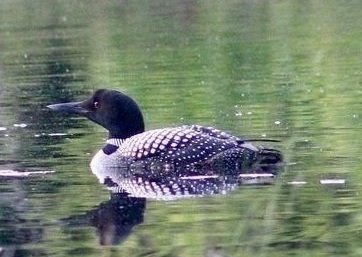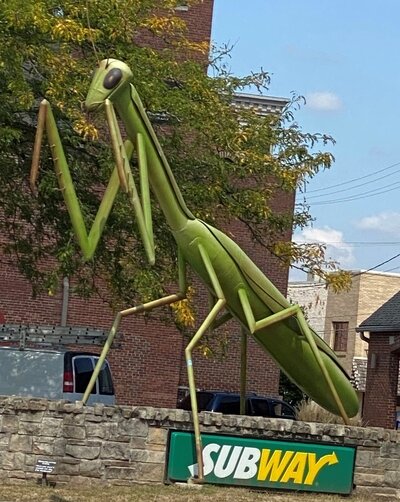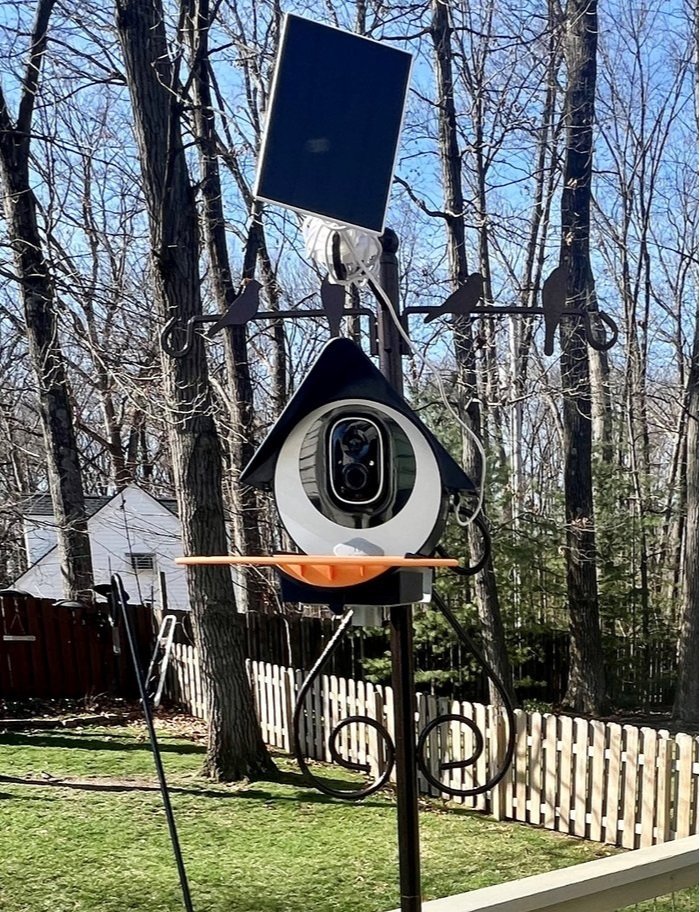SUMMER 2024

Early June is our favorite time of year because that’s when we make our annual pilgrimage to Lake Placid in northern Wisconsin. With views like this it’s hard to get motivated to do much of anything except stare at the lake.
The loons nest about 100’ off our dock. Life is good if you’re a loon in the Northwoods.
When we were coming back from fishing, a deer was swimming across the lake. We think her fawn is hidden on an island near where we stay.
The animals mostly aren’t disturbed by people, they’ll look for a second and then go back to their business.
A muskrat was hurriedly building its house.
Momma merganser was herding her ducklings to a log.
Once she got them to the log it was like she was saying “now I need some me time.”
Just some pretty scenery.
Cocoa had her first boat ride this year. At first, she was staying close to me like she was asking if this was safe.
It didn’t take her long to go lap hopping.
David’s dog Baxter decided he was the ship’s captain.
Cascade Falls is right in the middle of downtown Osceola. It isn’t for the faint of heart. The 156 steps going down aren’t bad, but what goes down must go up…
We had a chance to grab lunch with our oldest son, Tom, and his fiancé Kaiyla in Hudson, Wi. There was a band playing oldies, which was very pleasant. We never get to see them enough.
Building monsters is a great Wisconsin tradition. This one is in Altoona but there are dozens around the state.
During the summer, we often see hot air balloons going over our house when we’re walking the girls. Cocoa gets freaked out when they light the burner, and it goes whoosh.
I checked into going on a balloon ride, but they cost $900 for an hour so we’ll continue admiring them from a distance.
Metamora is a fascinating historic town of about 200 people that’s home to an early 1800’s grist mill and what is believed to be the only remaining covered bridge aqueduct.
Canals need level water levels to function. Aqueducts were used to control the water level. On the left of the covered bridge, you can see water being drained from the canal after several recent rains.
The Whitewater Canal used horse drawn boats and spans 76 miles. 56 locks raised boats by 491 feet. The canal was dug by hand in the 1840’s and cost around $15,000/mile (in 1840’s money).
The town grew up to re-supply boats using the canal. When the canal was replaced by a railroad, the town continued providing supplies for the railroad as it passed through.
The grist mill was powered by water diverted from the canal which drove a turbine.
The mill ground corn into flour, using giant mill stones like these. The millstones each weigh about 750 lbs.
We’ll end with some Northwoods wisdom.
We hope all is well with everyone.
Peter Cober



























